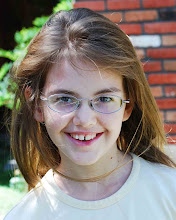Why is this piece of the puzzle so important? Well, hyperbaric oxygen therapy - also known as HBOT - uses an increase in atmospheric pressure to allow the body to incorporate more oxygen into blood cells, plasma, cerebral-spinal fluid, and other body fluids, which results in getting larger doses of oxygen to damaged tissues faster than normal. At sea level the atmospheric pressure is 1 ATA, which allows the lungs to absorb a normal amount of oxygen from the air. At higher altitudes, the pressure drops and the lungs are not able to absorb as much oxygen from the air. Think of oxygen masks dropping in airplanes at high altitude - they deliver extra needed oxygen due to lack of pressure. The exact opposite happens at any depth below sea level. The pressure there is greater than 1 ATA and now the lungs can absorb oxygen more easily and at a greater volume.
It's not a high oxygen overload like some therapies, in fact, just the pressure change alone can help with allowing the body to absorb more oxygen from ambient air. But as long as we're trying to increase O2 levels, we may as well add a few extra molecules to the mix so Sada wears a nose cannula to get a low dose of oxygen during the time she's feeling the pressure. She comes out looking just like she went in, but a little more awake - she just got dosed with extra energy!
The chamber looks like a big, fat, hollow hot dog with windows... kind of a white weinermobile without wheels. There's a mattress on the bottom to lay on or sit on during the "dive." An oxygen source on the outside is connected to the chamber, the entry gets sealed up, and it takes 10 minutes or so to blow up like a balloon and reach 1.3 ATA - equivalent to 10 feet below sea level. Yawns help to adjust the ears for pressure changes. Sada will read, do workbooks, or watch a movie on a portable DVD for the hour or so she's in there. Jeff sleeps.
Usually HBOT is used for wound healing, scuba complications, and altitude sickness. But stroke complications can be completely reversed, and it's also extremely helpful for cerebral palsy, autism, brain trauma, multiple sclerosis, visual impairment, sports injuries, ADD/ ADHD and detoxing. We've been amazed at how fast Sada's incisions have healed and how much improvement her eye has shown. Maybe it's all coincidence and maybe she's just been lucky, but somehow I doubt it. To be able to start treatments so quickly after coming home - and continue even over New Year's - was almost too good to be believed. In this case, blessings + work = miracles!





No comments:
Post a Comment